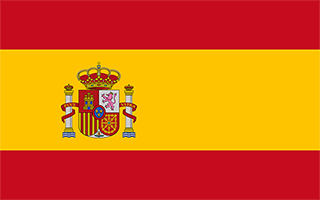Facts and Data
Webpages:
Official Unesco Page
Basis Data:
Unesco World heritage since: 2009
Size of heritage: 233 ha
- Buffer zone: 1,936 ha
Coordinates:
Longitude: -7,594°
Latitude: 43,386°
Summary
The Tower of Hercules has served as a lighthouse and landmark at the entrance of La Coruña harbour in north-western Spain since the late 1st century A.D. when the Romans built the Farum Brigantium. The Tower, built on a 57 metre high rock, rises a further 55 metres, of which 34 metres correspond to the Roman masonry and 21 meters to the restoration directed by architect Eustaquio Giannini in the 18th century, who augmented the Roman core with two octagonal forms. Immediately adjacent to the base of the Tower, is a small rectangular Roman building. The site also features a sculpture park, the Monte dos Bicos rock carvings from the Iron Age and a Muslim cemetery. The Roman foundations of the building were revealed in excavations conducted in the 1990s. Many legends from the Middle Ages to the 19th century surround the Tower of Hercules, which is unique as it is the only lighthouse of Greco-Roman antiquity to have retained a measure of structural integrity and functional continuity.
Location on Map
Show bigger map on Openstreetmap
Introduction
The Tower of Hercules is a UNESCO World Heritage site located in A Coruña, Galicia, Spain. It is an ancient Roman lighthouse that has stood tall for over two millennia, making it one of the oldest functioning lighthouses in the world. This historic landmark holds immense cultural and historical significance, attracting visitors from all over the globe.
History
The Tower of Hercules, also known as the Farum Brigantium, was constructed during the 1st century AD under the Roman Emperor Trajan's rule. Its purpose was to guide ships safely through the treacherous waters of the Atlantic Ocean and the Bay of Biscay. The lighthouse was built on a promontory known as the Punta Herminia, which offered an ideal location for navigation.
Legend has it that the tower was built by the mythical hero Hercules himself, hence its name. However, historical evidence suggests that it was actually constructed by the Romans. The tower's design was inspired by the Lighthouse of Alexandria, one of the Seven Wonders of the Ancient World.
Architecture
The Tower of Hercules stands at an impressive height of 55 meters (180 feet) and is divided into three distinct sections. The lower section, built with large blocks of granite, dates back to the Roman era. The middle section, added during the 18th century, features a neoclassical design. Finally, the upper section, added in the 19th century, showcases a modernist style.
The tower's interior consists of a spiral staircase with 242 steps leading to the top. From there, visitors can enjoy breathtaking panoramic views of the surrounding landscape and the Atlantic Ocean.
Current State
The Tower of Hercules has undergone several renovations and restorations over the centuries to ensure its preservation. In 1791, architect Eustaquio Giannini carried out significant renovations, adding the neoclassical section. In the 19th century, architect Giannini's son, Domingo de Andrade, added the modernist section.
Today, the Tower of Hercules is fully operational and serves as an active lighthouse, guiding ships along the Galician coast. It is equipped with a powerful electric light that can be seen from a distance of 32 nautical miles.
The site surrounding the tower has been transformed into a beautiful park, offering visitors a serene and picturesque environment. The park features well-maintained gardens, walking paths, and picnic areas, making it an ideal spot for leisurely strolls and family outings.
The Tower of Hercules has also become a popular tourist attraction, drawing visitors who are fascinated by its rich history and architectural grandeur. The site offers guided tours, allowing visitors to explore the tower's interior and learn about its fascinating past.
Conclusion
The Tower of Hercules stands as a testament to the ingenuity and architectural prowess of the ancient Romans. Its enduring presence and functionality as a lighthouse for over two thousand years make it a remarkable UNESCO World Heritage site. Whether admired for its historical significance, architectural beauty, or panoramic views, the Tower of Hercules continues to captivate and inspire visitors from around the world.
